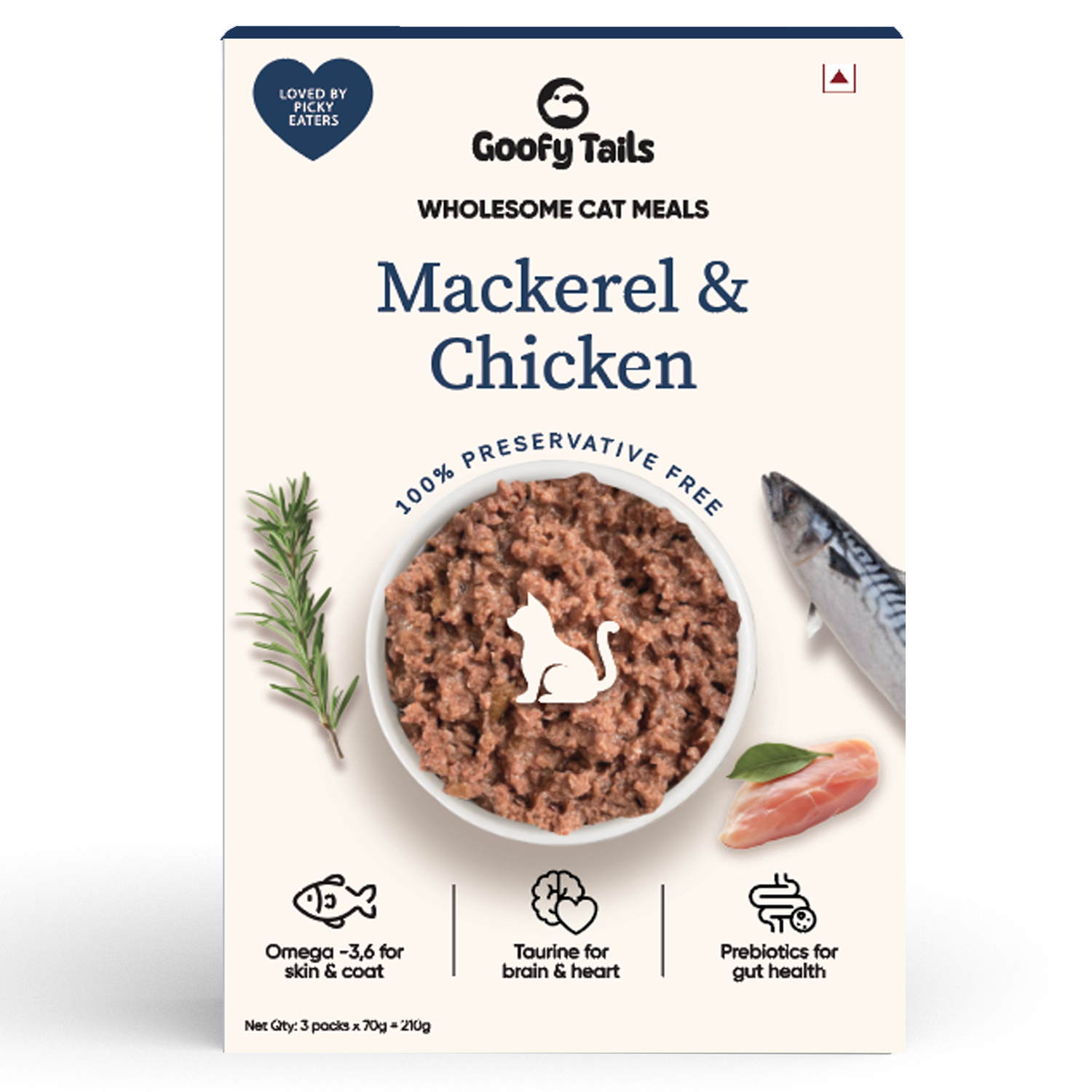What is freeze dried dog and pet food? Is Fresh food actually the best?
Let’s understand how the rapidly growing and evolving pet industry is shaping up in terms of consumption of foods and treats.
About 10 years back Dog Food , Cat Food or Pet Food was classified as
- Dry Dog Food or Kibble
- Wet Food or Gravy
- Home food / Raw food
|
Year |
Classification of Pet Food |
Trends and Changes |
|
2013 |
Dry Food (Kibble) |
Dry food remains popular due to convenience and longer shelf life. |
|
Wet Food (Gravy) |
Wet food gains popularity as pet owners seek variety and hydration. |
|
Home Food / Raw Food |
Raw food diets become a trend among health-conscious pet owners. |
|
|
2016 |
Dry Food (Kibble) |
Premium and specialized kibble options become widely available. |
|
Wet Food (Gravy) |
Grain-free and organic wet food options gain traction. |
|
Home Food / Raw Food |
Raw food diets continue to grow in popularity and diversity. |
|
|
2019 |
Dry Food (Kibble) |
Focus on high-protein and grain-free kibble for health-conscious pets. |
|
Wet Food (Gravy) |
Customized meal plans and subscription services become available. |
|
Home Food / Raw Food |
Continued rise in raw food diets; more commercial raw food options. |
|
|
2022 |
Dry Food (Kibble) |
Introduction of novel proteins and functional ingredients in kibble. |
|
Wet Food (Gravy) |
Focus on sustainability and eco-friendly packaging for wet food. |
|
|
Home Food / Raw Food |
Growth in frozen and freeze-dried raw food options. |
As there is shift from pet ownership to pet parenting and with our lives becoming busy , hectic and complex - innovative, nutritious and easy to serve pet food has evolved. Here are upcoming food types which will eventually shape the future of our pets
Freeze-dried foods and treats
Freeze-dried foods and treats offer several benefits and disadvantages for both humans and pets. These products are created by freezing the food and then removing its moisture content through a process called sublimation, which preserves the nutrients and flavor.
Benefits:
- Nutrient Retention: Freeze-drying locks in the nutritional value of the food, making it a healthy choice for both humans and pets. Vital vitamins and minerals remain intact.
- Long Shelf Life: One of the most significant advantages is the extended shelf life. These products can be stored for months or even years without the need for refrigeration.
- Lightweight and Portable: Freeze-dried foods are lightweight and perfect for on-the-go situations, such as camping or traveling with pets.
- Minimal Additives: They often contain fewer additives and preservatives compared to other food preservation methods.
Disadvantages:
- Cost: Freeze-dried products can be more expensive than their traditional counterparts due to the specialized processing.
- Rehydration Required: Many freeze-dried foods and treats need to be rehydrated before consumption, which can be inconvenient in some situations.
- Limited Variety: The range of freeze-dried options can be limited compared to other types of pet food or human snacks.
- Texture Changes: The freeze-drying process can alter the texture of some foods, making them crumbly or less appealing to some consumers.
Pantry Fresh or Retort based Preservative Free Food
Pantry Fresh Food:
- Nutrient Retention: Pantry fresh foods are minimally processed, preserving essential nutrients, vitamins, and flavors, offering a healthier option for pets.
- Variety: These foods often come in a wide variety of flavors and formulations, catering to different dietary needs and preferences.
- Texture and Taste: The texture and taste closely resemble fresh food, making them more appealing to pets.
Retort-based Preservative-Free Food:
- Long Shelf Life: Retort-based products have an extended shelf life, making them convenient for pet owners who want to stock up or for use in emergencies.
- Convenience: They require no refrigeration until opened, making them easy to store and serve. Disadvantages:
Pantry Fresh Food:
- Shorter Shelf Life: Compared to retort-based products, pantry fresh foods have a shorter shelf life and may require more frequent restocking.
- Limited Availability: Availability may be limited, and they can be less convenient for long-term storage.
Retort-based Preservative-Free Food:
- Processing: The retort process can result in some nutrient loss and alterations in texture compared to pantry fresh options.
- Limited Variety: The variety of flavors and formulations may be more limited compared to pantry fresh alternatives.
Fresh and Frozen Food (blast freeze)
Benefits:
- Optimal Nutrient Retention: Fresh food offers the highest level of nutrient preservation, ensuring that pets receive maximum health benefits from their meals.
- Palatability: Many pets find fresh food more palatable due to its natural taste and texture, which can encourage healthy eating habits.
- Variety: Fresh food can be customized to cater to specific dietary needs and preferences, providing a wide range of options for pets with different requirements.
Frozen Food (Blast Freeze):
- Nutrient Preservation: Blast freezing locks in nutrients, preventing degradation over time, making it an excellent choice for long-term storage while maintaining high-quality ingredients.
- Convenience: Frozen meals are easy to portion and store, allowing pet owners to manage their pet's diet with precision.
Disadvantages: Fresh Food:
- Short Shelf Life: Fresh food has a limited shelf life and needs to be consumed relatively quickly, which can be inconvenient for some pet owners.
- Storage Requirements: It requires refrigeration or freezing to prevent spoilage, which may not always be practical.
Frozen Food (Blast Freeze):
- Thawing Time: Frozen food needs to be thawed before serving, which can require advance planning.
- Freezer Space: Storing frozen pet food may require ample freezer space, which can be a limitation for some households.
Shelf Life:
Fresh Food: Typically, fresh food for pets has a shelf life of a few days to a few weeks, depending on ingredients and preservatives used.
Frozen Food (Blast Freeze): Blast-frozen pet food can have a shelf life of several months to a year or more when stored at the recommended temperatures.
Raw Simple Food
Benefits:
- Nutritional Purity: Raw food retains its natural nutrients, offering pets a diet closer to what they would consume in the wild. This can contribute to improved health and vitality.
- Dental Health: Chewing on raw bones can promote dental health by reducing tartar buildup and strengthening jaw muscles.
- Food Allergies: A raw diet can be beneficial for pets with food allergies, as it allows for precise ingredient control.
Disadvantages:
- Food Safety: Handling raw meat can expose humans and pets to foodborne pathogens like Salmonella or E. coli. Proper food safety precautions are essential.
- Nutritional Balance: Achieving a balanced diet with all necessary nutrients can be challenging without careful planning and supplementation.
- Storage and Shelf Life: Raw ingredients have a limited shelf life and must be stored and handled with care to avoid spoilage and bacterial growth.
Shelf Life:
Frozen Raw: Raw ingredients can be frozen for an extended period, often up to a year, while maintaining their nutritional quality.
Refrigerated Raw: In the refrigerator, raw ingredients typically remain safe for consumption for a few days to a week, depending on the specific ingredient and storage conditions.
Fresh Raw: Fresh raw ingredients have the shortest shelf life and should be consumed within a day or two of purchase.
Air Dried Food and Treats
- Nutrient Retention: Air drying preserves the natural nutrients, vitamins, and minerals in the ingredients, ensuring that pets receive a nutritious diet.
- Long Shelf Life: Air-dried products have an extended shelf life, often lasting several months or even years when properly stored. This makes them convenient for pet owners and reduces food wastage.
- Convenience: These products require no refrigeration and are easy to portion, making them ideal for travel and on-the-go feeding.
- Appetizing Texture: Many pets find the texture and taste of air-dried food and treats highly appealing, which can encourage healthy eating habits.
Disadvantages:
- Cost: Air-dried products can be more expensive than traditional pet food due to the specialized drying process.
- Limited Variety: The range of flavors and formulations may be more limited compared to other types of pet food.
Shelf Life:
Air-Dried Food and Treats: When stored in a cool, dry place and kept in a sealed container, air-dried products can have a shelf life ranging from several months to a few years, depending on the brand and specific product.
Insect based meals and diets
Benefits:
- Sustainability: Insects are a highly sustainable protein source, requiring less land, water, and resources compared to traditional livestock.
- Nutritional Value: Insects are rich in essential nutrients, such as protein, healthy fats, vitamins, and minerals, making them a nutritious choice for pets.
- Hypoallergenic: Insect-based diets can be hypoallergenic, making them suitable for pets with food allergies or sensitivities.
Disadvantages:
- Availability: Insect-based pet food may not be as readily available as traditional options, limiting accessibility.
- Taste Preferences: Some pets may not immediately accept insect-based foods due to taste preferences developed on traditional diets. 3. Cost: Insect-based pet food can be more expensive than conventional options, primarily due to production costs.
Shelf Life:
Insect-Based Meals and Diets: The shelf life of insect-based pet food can vary depending on the specific product and packaging. Proper storage in a cool, dry place is essential to maintain freshness and prevent spoilage. On average, they typically have a shelf life of several months to a year.
While conventional kibble still dominates the pet food market, the above trends are quickly catching up and would show a paradigm shift in consumption patterns over next 2 years. Pet parents would eventually adopt healthier options. Most importantly as kibble has caused more harm than good to pets over these years, pet parents are becoming aware of the challenges and harm and have started to #unKibble








Leave a comment